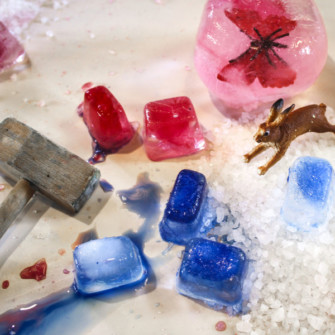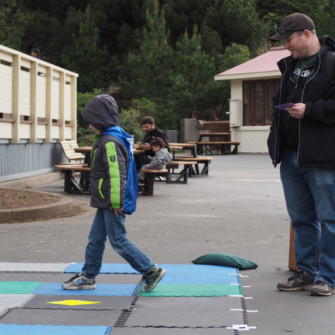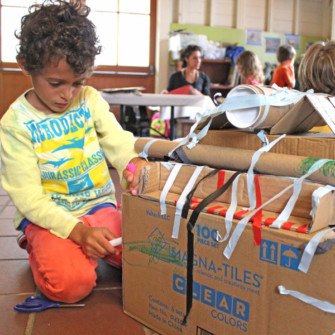In between dreidel spinning, cookie baking, and holiday meals, there will be a moment when your toddler looks up at you and asks "now what?" Luckily, the experts at the Bay Area Discovery Museum (BADM) have your answer with three fun and easy brain-boosting activities for toddlers and their older siblings.
For another opportunity to develop your toddler's creativity, enter here to win a free three-week family class at BADM.

There’s often more than one way to complete a task, but through trial and error, the best strategy emerges. In this activity, children will test out different tools as they try to excavate objects frozen in ice. This activity is intended for ages 2 and up, and is recommended for one or more participants.
This activity requires both flexibility and persistence, which are cognitive and affective components of creativity. Children must remain persistent in the task, but also need to be willing to change their problem-solving tactics if necessary. Both divergent and convergent thinking are essential to successfully complete the excavation. Divergent thinking produces a multitude of potential excavation methods, while convergent thinking is utilized to decide on the method that is most likely to be successful. The cycle between divergent and convergent thinking gives birth to the creative thinking process.

Children take turns being a programmer and acting as the computer as they play on a life-size game board. In this group activity, children can learn about programming while practicing their communication skills. This activity is intended for ages 2 and up, and is recommended for two to four participants.
Flexibility and an openness to new experiences are essential for creativity. Both programmers and computers must be flexible and ready for a new challenge. Working closely with a partner encourages collaboration and enhances communication skills. Children must adapt to novel constraints (such as the constraint of having to move within the grid) in order to successfully complete seemingly simple tasks.

The holiday aftermath is a perfect time to take on a cardboard challenge! Using boxes of different sizes and shapes, construct a unique creation and then make up a narrative to go along with it. Maybe your creation is a new kind of household pet, or maybe you’ll invent a machine that can complete an everyday task. Your own imagination is your only limit! This activity is intended for ages 2-5, and is recommended for one or more participants.
Limiting yourself to specific resources can actually make you more creative. Since this activity relies so heavily on recycled materials, it is inevitable new uses for them will be discovered.
These activities were contributed by the Center for Childhood Creativity at the Bay Area Discovery Museum. ©2016 Bay Area Discovery Museum. For similar activities, please visit CreativityCatapult.org
BADM is generously giving away a three-week family class to one lucky reader of GGMG's City Blocks Blog. The winner can enroll with a toddler (ages 2-4) in one three-week session of their choosing between January and March 2018. The winner will also have the opportunity to share their impressions of the experience on the blog.
Enter here before January 3, 2018 and spread the word—the more you share, the more entries you receive!
Join thousands of moms in our incredibly active online forums where our members will support you in all your parenting needs. Also come to exclusive GGMG events, get discounts through our partners, and participate in mom-focused activities.
Only $75 per year.
Comments